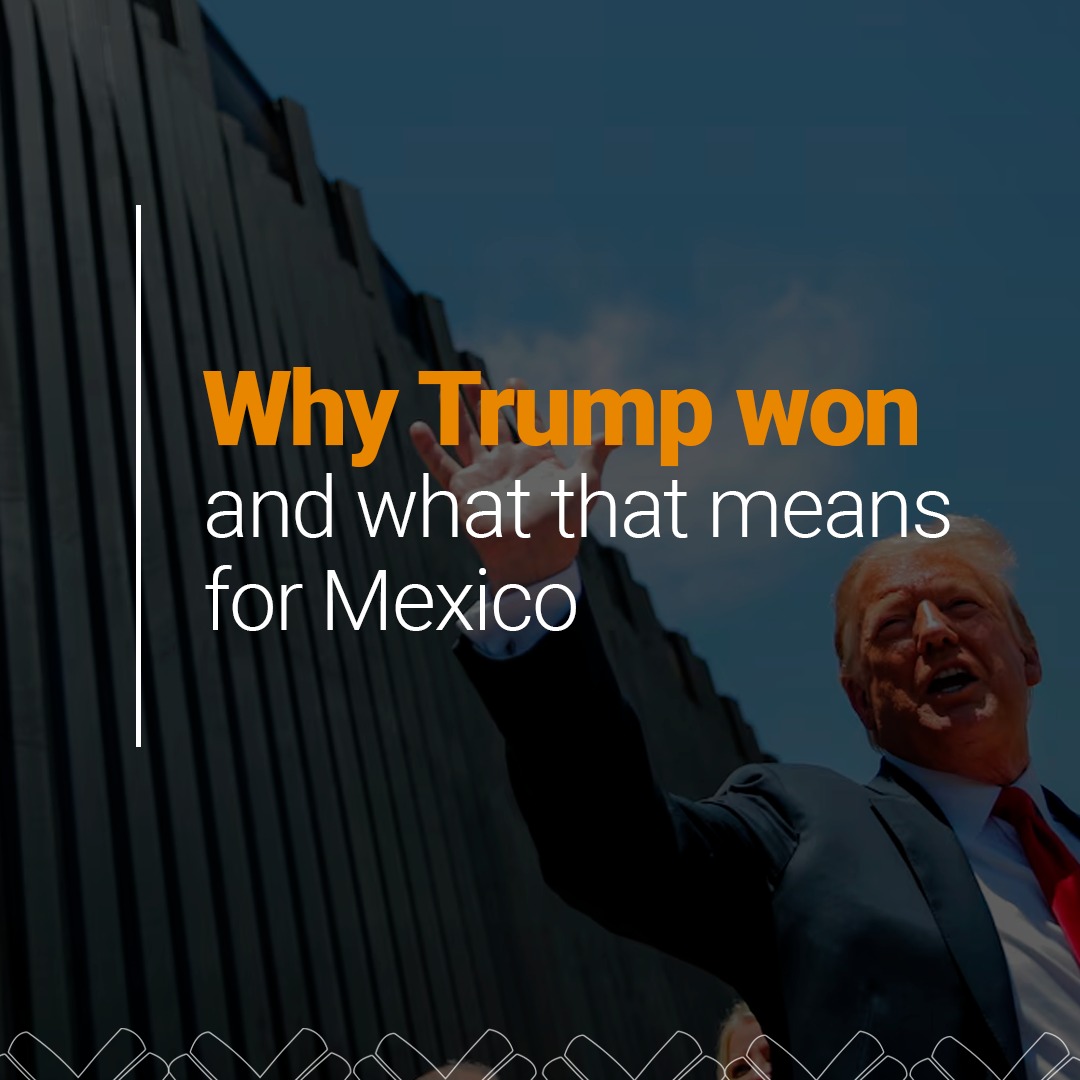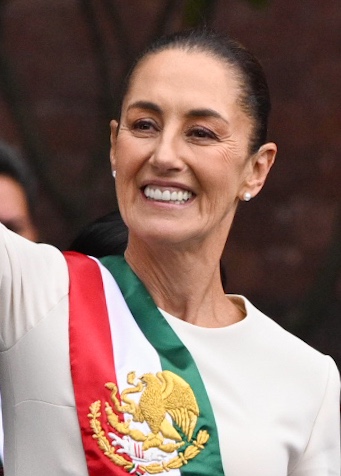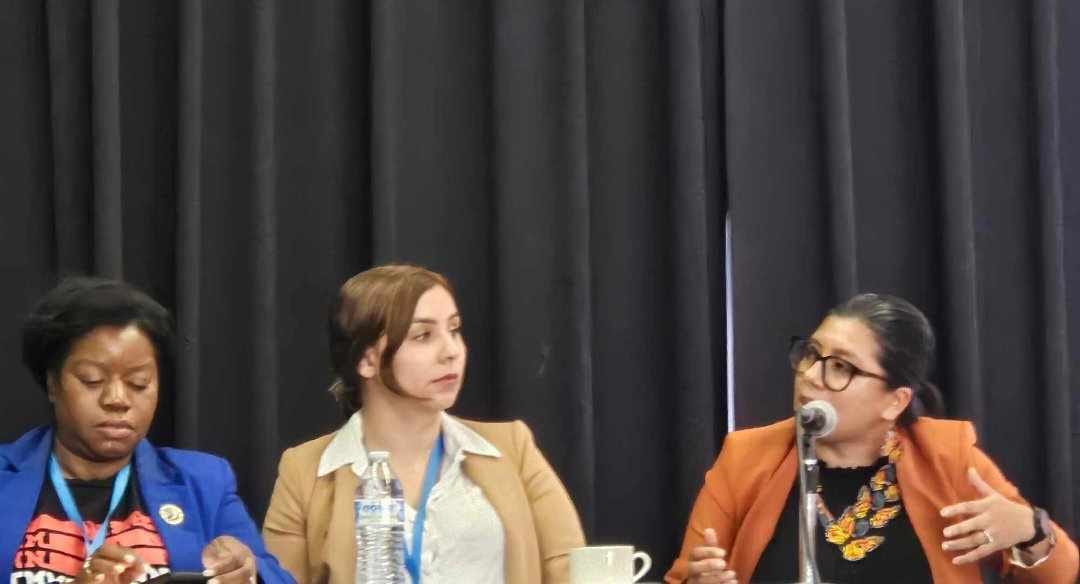p o l i c y b
r i e f
Colombia’s Role in International Drug Industry
by Winifred Tate | June 2001
This brief was commissioned and originally distributed
by the IRC’s Foreign Policy
in Focus (FPIF) project. It is reproduced here courtesy of FPIF. Foreign
Policy in Focus—A Think Tank Without Walls—can be accessed online
at http://www.fpif.org
Key Points
Colombia’s role in the international drug trade has shifted from a grower/exporter of marijuana in the 1970s to a processor/shipper of cocaine in the 1980s to a major grower/processor/transshipper of coca and heroin in the late 1990s.
Colombia, one of Latin America’s oldest democracies, has been
wracked by drug violence and corruption.
Profits from the illicit economy finance all sides of the armed conflict in Colombia: drug traffickers, paramilitary groups, the security forces, and guerrilla groups.
What is called “drug trafficking” in the U.S. is in fact a major, multifaceted, and global industry. Colombia’s role in this
industry has evolved over the past decades. In the 1970s, a boom in marijuana
cultivation along Colombia’s Atlantic Coast created a class of newly
rich traffickers supplying the U.S. market. In the late 1970s, Colombia’s
new cartels, first in Medellin and then in Cali, expanded from marijuana
to the processing and export of cocaine. Led by a small number of powerful
drug kingpins, these family-based empires came to control a billion-dollar
cocaine industry that processed coca grown primarily in Bolivia and Peru.
The power and violence of the drug industry came to permeate all facets
of Colombian society, as signified by the saying “plata o plomo”—silver
or lead—meaning “take the bribe or take a bullet.” Drug
lords achieved unprecedented political influence through threats, bribery,
and political contributions. Drug violence also undermined Colombia’s
longstanding democracy, particularly during the 1980s, when the Medellin
Cartel waged war on the Colombian government, killing hundreds of judges,
police investigators, journalists, and public figures.
In addition to these targeted killings, paramilitary organizations—supported
by drug traffickers—have carried out more generalized violence in
rural areas against the civilian population. Since the early 1980s, drug
traffickers, together with landowners and local military commanders, have
formed paramilitary organizations to “clean” their territory
of guerrillas and alleged guerrilla sympathizers and to protect land,
cattle, and cocaine laboratories and strategic shipping routes. During
the 1990s, ties between illicit drug operations and paramilitary organizations
solidified, with several paramilitary chiefs becoming high-level traffickers.
For instance, the U.S. Drug Enforcement Administration (DEA) has labeled
paramilitary leader Carlos Castaño a “major drug trafficker.”
Castaño is the public face of the United Self-Defense Forces of
Colombia (AUC), an umbrella group of regional paramilitary forces. Over
the past three years, the AUC has orchestrated hundreds of massacres and
selective assassinations throughout Colombia, in many cases with the support
of local Colombian security forces. The U.S. State Department estimates
that paramilitary forces are responsible for more than 70% of Colombia’s
human rights abuses.
Beginning in 1989 with the “Andean Strategy,” U.S. funds, equipment,
logistical support, and personnel from the DEA, the CIA, and other agencies
have played a leading role in counternarcotics operations in Colombia.
U.S.-assisted operations resulted in the killing of Pablo Escobar in 1993
and the jailing of the heads of the Cali Cartel in 1994. However, the
breakup of the two largest cartels did not lead to a long-term decline
in Colombian drug trafficking. These drug syndicates have since been replaced
by smaller, more vertically integrated trafficking organizations whose
nimble, independent traffickers are much more difficult to detect and
infiltrate. These traffickers employ new and constantly changing shipping
routes through Central America, Mexico, and the Caribbean for moving cocaine
and, increasingly, heroin.
In recent years, cultivation of both coca and poppies (used to make heroin)
has expanded enormously in Colombia. Unlike in Peru and Bolivia, where
peasants have for centuries grown and chewed the coca leaf (a mild stimulant,
compared with the processed form, cocaine), in Colombia this practice
was limited to a very few, small indigenous groups. While coca cultivation
has recently declined in Peru and Bolivia due to U.S.-financed eradication
programs, cultivation in Colombia increased 54% from 1996 to 1998, leaving
overall Andean coca production constant.
Guerrilla groups active in areas of increasing coca cultivation, primarily
the Revolutionary Armed Forces of Colombia (FARC), have increasingly financed
their activities by taxing coca crops and by protecting drug processing
labs and other illicit installations. The dramatic increase in coca cultivation
in southern Colombia, a FARC stronghold since the 1960s, coincided with
the organization’s strategic effort to increase its military capabilities
in the mid-1990s. Although politicians in Washington frequently use the
term “narcoguerrillas” to imply a complete integration of Colombia’s
drug cartels and guerrillas, there is no evidence that FARC and other
insurgent groups are involved in the illicit industry’s most lucrative
stages: transshipment and sale of drugs on the international market. According
to the DEA, “There is little to indicate that insurgent groups are
trafficking in cocaine themselves.”
Problems with Current U.S. Policy
Key Problems
The U.S. is escalating its funding for ineffective “war on drugs”
programs, centered primarily in Colombia.
Herbicide spraying has failed to slow the increase in coca cultivation
in Colombia and is fueling peasant support for the guerrillas.
The U.S. is escalating support for abusive security forces and is
now directly supporting counterinsurgency operations in Colombia.
In 1989, President Bush declared that the “gravest domestic threat
facing our nation today is drugs,” and he announced the “Andean
Strategy” to reduce the amount of illicit narcotics entering the
United States. Over the last decade, this strategy has expanded and intensified
“source country” counternarcotics operations. Antidrug funding
for Colombia has dramatically escalated from $18 million in 1989 to almost
$300 million in 1999. U.S. programs in Colombia have been two-pronged:
extensive herbicide spraying in illicit crop growing areas, primarily
coca fields in southern Colombia, and hundred of millions of dollars in
military hardware and training for Colombian security forces involved
in counternarcotics operations.
Despite inflated funding, counternarcotics efforts have failed dramatically.
A July 1999 General Accounting Office (GAO) report found that “despite
two years of extensive herbicide spraying, U.S. estimates show there has
not been any net reduction in coca cultivation—net coca cultivation
actually increased 50 percent.” Coca cultivation has moved further
into the Amazon and into increasingly remote areas. Peasant farmers, pushed
into colonizing isolated regions because of political violence and land
pressure in other areas of the country, have turned to coca and poppy
production as a means of economic support for themselves and their families.
A lack of regional development programs and the failure of the Colombian
government to provide basic services have worsened social tensions. U.S.-financed
fumigation campaigns targeting peasant growers actually work to the guerrilla’s
advantage by further exacerbating social tensions. This climate of discontent
has helped swell the ranks of FARC and has cast the guerrilla organization
as the defender of small peasant farmers.
The second major thrust of U.S. counternarcotics policy—support
for Colombia’s security forces—has meant increased support for
army and police counterinsurgency campaigns. Since 1989, the Colombian
National Police (CNP) has received the vast majority of U.S. counternarcotics
assistance in the form of military hardware and training. This has been
consistent with Washington’s contention that the police should be
responsible for domestic law enforcement, including eradication and local
interdiction efforts, while the military should protect Colombia’s
borders and concentrate on international interdiction operations. Beginning
in 1999, however, U.S. assistance for the Colombian Army—couched
as counternarcotics assistance but destined for combat troops in FARC-controlled
areas—as well as U.S. support for military intelligence operations
has grown dramatically. As a result, U.S. counternarcotics aid is increasingly
indistinguishable from counterinsurgency aid.
In addition, there are some 300 U.S. advisors on the ground in Colombia
from an array of agencies including the Pentagon, the Defense Intelligence
Agency, the CIA, and the DEA. The current level of military assistance
and number of advisors in Colombia on any given day has now reached levels
comparable to U.S. involvement in El Salvador in the 1980s. Some government
and military officials as well as members of Congress have raised the
concern that the U.S.—by sharply increasing its hardware, training,
and intelligence support for the Colombian army (despite eschewing direct
intervention)—is being drawn, once again, into an unwinnable and
costly Latin American civil conflict. Due to the secrecy surrounding many
of these operations, particularly those by the DEA, the CIA, and other
intelligence agencies, the exact dimensions of U.S. aid to Colombia are
impossible to determine.
The ground for this shift in policy was laid by a December 1998 military
cooperation agreement between the U.S. and Colombia. This agreement followed
several years of rocky U.S. relations with the Colombian Army because
of human rights violations and U.S. frustration that the Colombian armed
forces were not sufficiently committed to performing counternarcotics
operations. The new cooperation agreement includes the establishment of
a bilateral “working group” of U.S. and Colombian defense officials
and the creation of a counternarcotics battalion staffed by the Colombian
Army and equipped and trained by the United States. By late 1999, embassy
officials in Bogotá confirmed that three such battalions were being
formed. According to U.S. officials, these battalions are intended to
support CNP counternarcotics efforts in southern Colombia and to protect
against attacks by FARC. The battalions will be under the command of the
army, and sources within the CNP complain that the police have been largely
marginalized from coordination efforts.
The training and equipment provided for this battalion, as well as its
theater of operations, point to an overriding counterinsurgency mission.
The first battalion received light infantry and jungle warfare instruction
from U.S. Special Forces. The U.S. is also training and funding the Colombian
Special Forces Battalion and Special Forces School, which were instrumental
in army victories during the July guerrilla offensive.
In addition, the U.S. provides military intelligence assistance that
could be used in counterinsurgency operations. A June 1999 GAO report
revealed that the U.S. is sharing military intelligence on Colombian insurgents
but not monitoring how Colombia’s security forces are using this
information. The U.S. has been instrumental in establishing the Joint
Task Command, a Colombian military and police facility intended to coordinate
all operations in southern Colombia. Washington also helped reorganize
Colombia’s military intelligence following the 1998 disbanding of
the armed forces’ intelligence brigade due to its role in human rights
abuses. The extent of the U.S. role in Colombian intelligence gathering
was brought home with the July 1999, plane crash in which five U.S. and
two Colombian military personnel were killed. No Colombian police were
on the plane, which was involved in intercepting FARC communications.
Toward a New Foreign Policy
Key Recommendations
The U.S. should lend its full support to a negotiated settlement of
Colombia’s internal conflict.
Washington should suspend all aid to the Colombian security forces
until effective measures have been taken to reduce paramilitary violence
conducted with the complicity of the Colombian military.
U.S. drug control assistance should shift toward strengthening sound
investigative capabilities of civilian judicial institutions and stimulating
sustainable development activities for farmers currently involved in
illicit crop production.
The U.S. should recognize that its war on drugs against Colombia and
other “source countries” has been a failure and that it must
refocus on demand-reduction at home through education and treatment. Although
overseas efforts will not solve our domestic drug problems, the U.S. does
have a range of policy options that could support Colombian efforts to
confront drug trafficking and the violence and corruption caused by that
country’s drug trade.
Any significant advance against drug trafficking is unlikely as long
as Colombia’s civil war continues. The opening of peace talks between
FARC and the administration of President Andrés Pastrana (who took
office in August 1998), the first attempt at negotiations in seven years,
offers a precious opportunity for peace. The people of Colombia desperately
want peace. On October 24, 1999, upwards of 10 million Colombians marched
for peace in Bogotá and other cities, the largest public demonstration
ever in the country’s history.
President Clinton pledged support for the peace process and expressed
his intent to broaden U.S.-Colombian relations to address a range of issues,
including human rights, judicial reform, and trade. This verbal commitment
has not, however, been translated into decisive and comprehensive support
for peace and alternative development programs. In fact, U.S. counternarcotics
policy is escalating Colombia’s conflict and continues to present
obstacles to the fragile negotiation process.
The U.S. should stop its counternarcotics programs in Colombia and switch
to encouraging economic development for illicit crop producers. In 1998,
Congress, for the first time, allocated money for alternative development
in Colombia—$15 million over three years. But skepticism could easily
give way to cynicism regarding this effort: by late 1999, only a half
million dollars had been spent on alternative production, while U.S. military
aid to Colombia soared to almost $300 million for 1999 alone. Further,
current policy dictates that no money can be allocated for development
projects in southern Colombia due to guerrilla presence. In fact, alternative
development projects are operating in those areas, funded by the Catholic
Church, the Colombian and European governments, and the United Nations—and
some of these programs have even been destroyed by U.S. fumigation campaigns.
Both peasant farmers and President Pastrana have requested increased
investment in development programs for conflictive areas involved in illicit
crop production. Peasant farmers in southern Colombia, including coca
growers, have repeatedly called for more government assistance. In 1996,
these farmers organized a large protest march to demand better government
services, only to be met with violent repression from military and paramilitary
forces. Although the Colombian government signed a series of agreements
for increased public spending on infrastructure, health, and education,
these promises have yet to be fulfilled.
In 1999, Pastrana repeated his appeal for international support for “Plan
Colombia,” an ambitious program calling for substantial investment
in development programs. However, Washington’s FY1999 aid package
and the FY2000 proposals before Congress apportion more than 90% of U.S.
assistance to military hardware and training for the Colombian security
forces. Washington’s aid policy toward Colombia should change to
address Pastrana’s development objectives.
In addition, the U.S. should dedicate significant economic resources
toward strengthening and reforming civilian democratic institutions, particularly
local judiciaries. The Colombian Attorney General’s Office, particularly
the Human Rights Unit, has carried out a number of important investigations
of human rights cases. Yet the Colombian military rarely cooperates with
these investigations and has successfully blocked some probes. Because
of death threats, many prosecutors have been forced to leave the Attorney
General’s Office; several have fled the country. The U.S. Congress
has expressed its support for these human rights investigations but has
failed to provide significant assistance.
Congress and the Clinton administration should publicly encourage the
Colombian government to take immediate measures to combat paramilitary
groups, including purging members of the armed forces who maintain ties
to paramilitary groups or who tolerate their activities and enforcing
the hundreds of outstanding arrest warrants for paramilitary leaders.
The U.S. should deny visas to Colombian military officers implicated in
human rights violations and support of paramilitary activities. Given
the persistent pattern of human rights abuses by Colombia’s security
forces and their support for the vigilante violence of the paramilitary
groups, the U.S. should terminate all assistance to Colombia’s security
forces.
Sources for More Information
Organizations
Amnesty International USA
Colombia Coordinator
600 Pennsylvania Ave. SE, 5th Floor
Washington, DC 20003
Voice: (202) 544-0200
Fax: (202) 546-7142
Email: ppaz@igc.org
Website: http://www.amnesty-usa.org
Center for International Policy
1755 Massachusetts Ave. NW, Ste. 312
Washington, DC 20036
Voice: (202) 232-3317
Fax: (202) 232-3440
Email: cip@ciponline.org
Website: http://www.ciponline.org
Colombia Support Network
Box 1505
Madison, WI 53701
Voice: (608) 257-8753
Fax: (608) 255-6621
Email: csn@igc.apc.org
Website: http://www.igc.apc.org/csn
Latin America Working Group
110 Maryland Ave. NE, Box 15, Ste. 203
Washington, DC 20002
Voice: (202) 546-7010
Fax: (202) 543-7647
Email: lawg@lawg.org
Web: http://www.lawg.org
Transnational Institute
Paulus Potterstraat 20
1071 DA Amsterdam
Netherlands
Voice: (3120) 662-6608
Fax: (3120) 675-7176
Email: tni@tni.org
Website: http://www.tni.org
U.S./Colombia Coordinating Office
1630 Connecticut Ave., NW, Ste. 200
Washington, DC 20009
Voice: (202) 232-8090
Fax: (202) 232-8092
Email: agiffen@igc.org
Website: http://www.igc.org/colhrnet
Washington Office on Latin America
1630 Connecticut Ave. NW, 2nd Floor
Washington, DC 20009
Voice: (202)-797-2171
Fax: (202) 797-2172
Email: wola@wola.org
Website: http://www.wola.org
Publications
Human Rights Watch, War Without Quarter: Colombia and International
Humanitarian Law (Washington: Human Rights Watch, 1998).
Joy Olson and Adam Isaacson, Just the Facts: A Civilian’s Guide
to Defense and Security Assistance to Latin America and the Caribbean
(Washington: Latin America Working Group, 1998).
Ricardo Vargas, The Revolutionary Armed Forces of Colombia and the
Illicit Drug Trade (Washington: WOLA, TNI, Accion Andina, 1999).
Washington Office on Latin America, U.S. International Drug Control
Policy: A Guide for Citizen Action (Washington: Washington Office
on Latin America, 1999).
Websites
Drug Enforcement Administration
http://www.usdoj.gov/dea
El Tiempo
http://www.eltiempo.com
Office of National Drug Control Policy
http://www.whitehousedrugpolicy.gov
Peace Brigades International
http://www.igc.apc.org/pbi/colombia.html
Semana
http://www.semana.com
U.S. State Department Colombia Human Rights Report
http://www.state.gov/www/global/human_rights
This brief is a product of the Interhemispheric Resource
Center’s Global Affairs
and Americas Programs .
All rights reserved.
Recommended citation: "Colombia’s Role in
International Drug Industry," Foreign Policy In Focus Policy Brief,
vol. 4, iss. 30 (Interhemispheric Resource Center/Institute for Policy
Studies, June 2001).
Web location: http://www.americaspolicy.org/briefs/2001/v4n30colo.html



